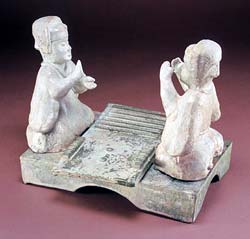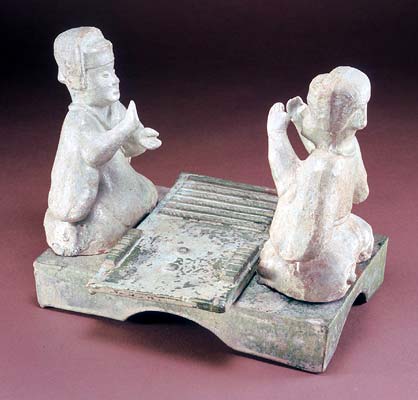In virtually all depictions or models of liubo games, the mechanism of play is six rods, which usually are shown laid out neatly in parallel lines on a playing mat or, rarely, in the progress of play, splayed out as if they have just been thrown. Since no dice accompanied the early boards, it is not certain whether rods or dice were used with them. It seems likely, however, that rods would have been employed, as these were a more elementary form of dice and probably were inspired by divination practices. The earliest surviving examples of these rods are lengths of split bamboo with one flat and one rounded side, the hollow side inlaid with copper wire. In addition to the gaming pieces, rods or dice, and a board, other items were needed to complete a full set of liubo paraphernalia. The most essential of these were tallies, which were used to keep record of the number of points won by each player.

|
Games of Chance | ||||||||||||
|
Liubo players |
Liubo
From about 350 B.C.E. to 200 C.E., a game called liubo
(“six rods”) was a veritable craze in China. It was
played by the elite (and probably also by commoners) who took the
equipment for the game to their graves. Liubo was represented
frequently in ceramic models placed in tombs, depicted in pictorial
stone reliefs, mentioned in literary texts, and featured as the
subject of poems and common rhymes. Yet in the third century C.E.,
its popularity declined dramatically, and by the fourth century
it had virtually died out, its rules forgotten.
|
||||||||||||





